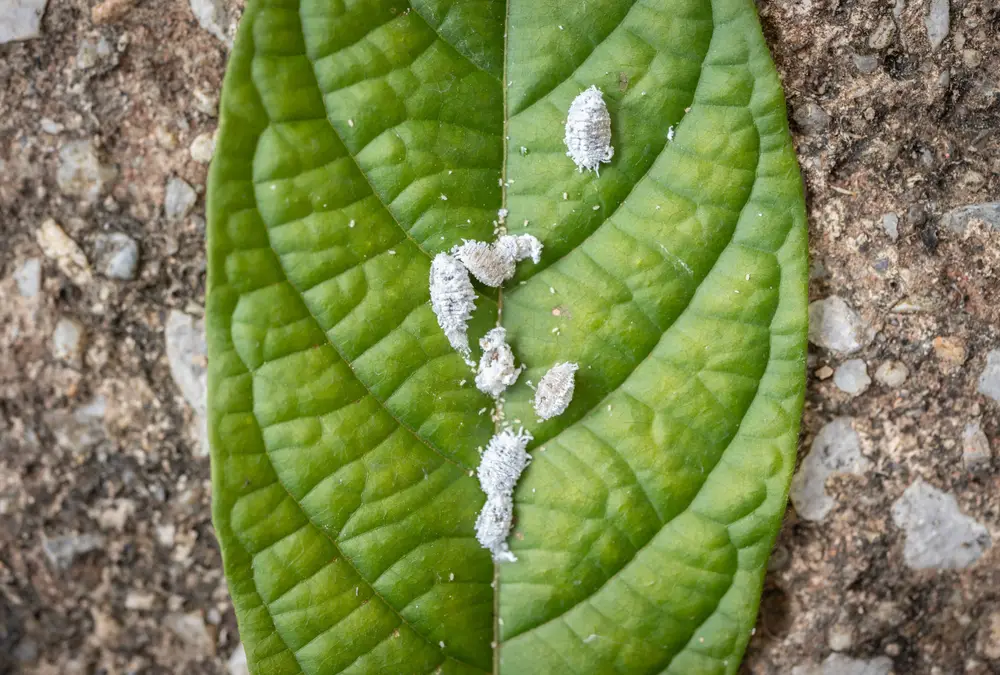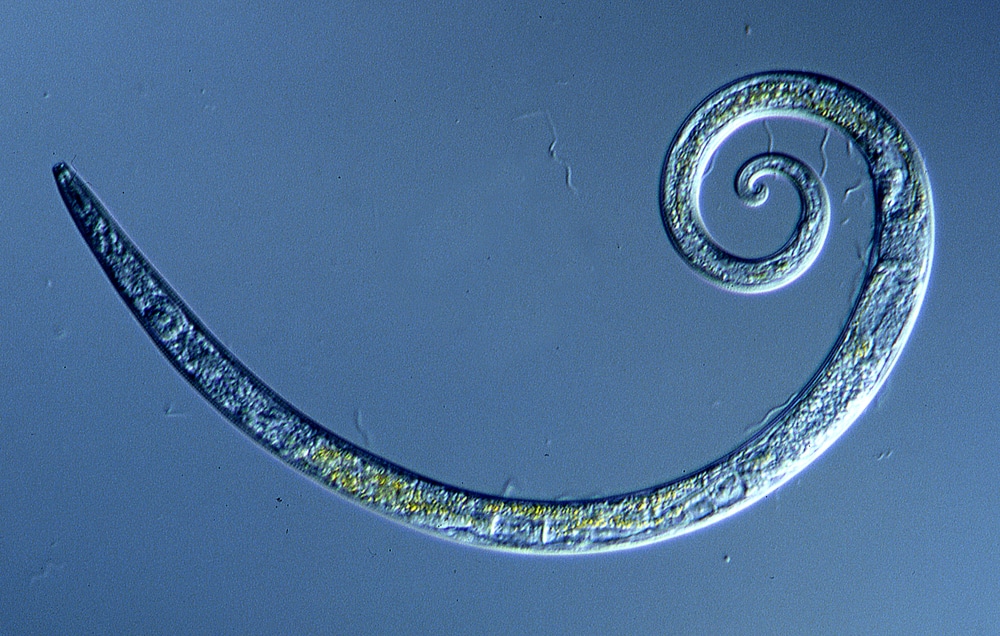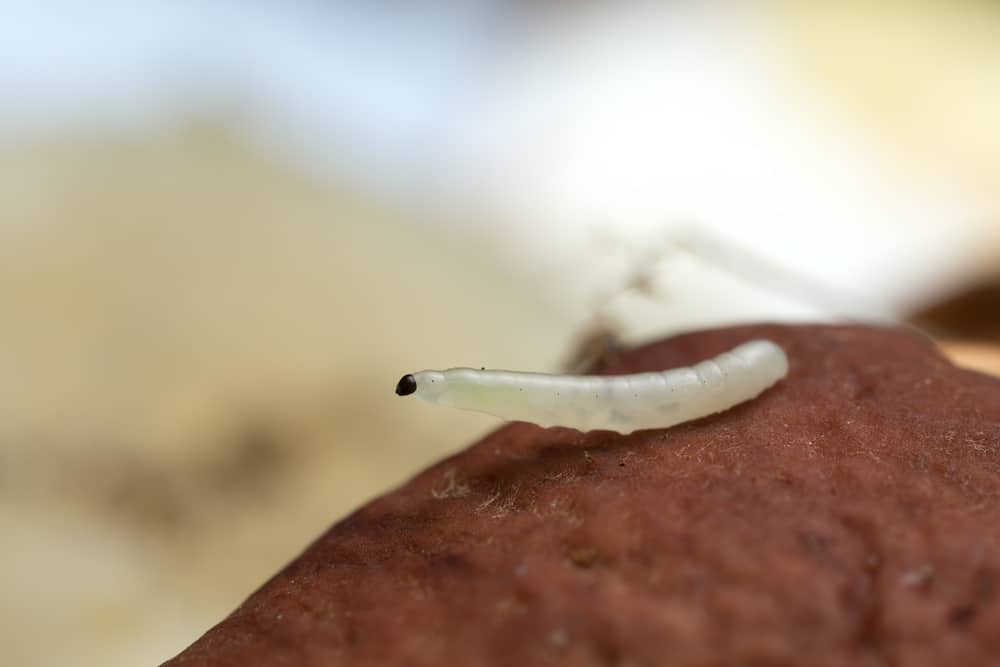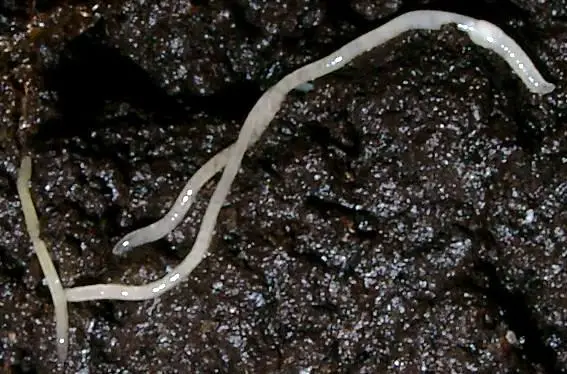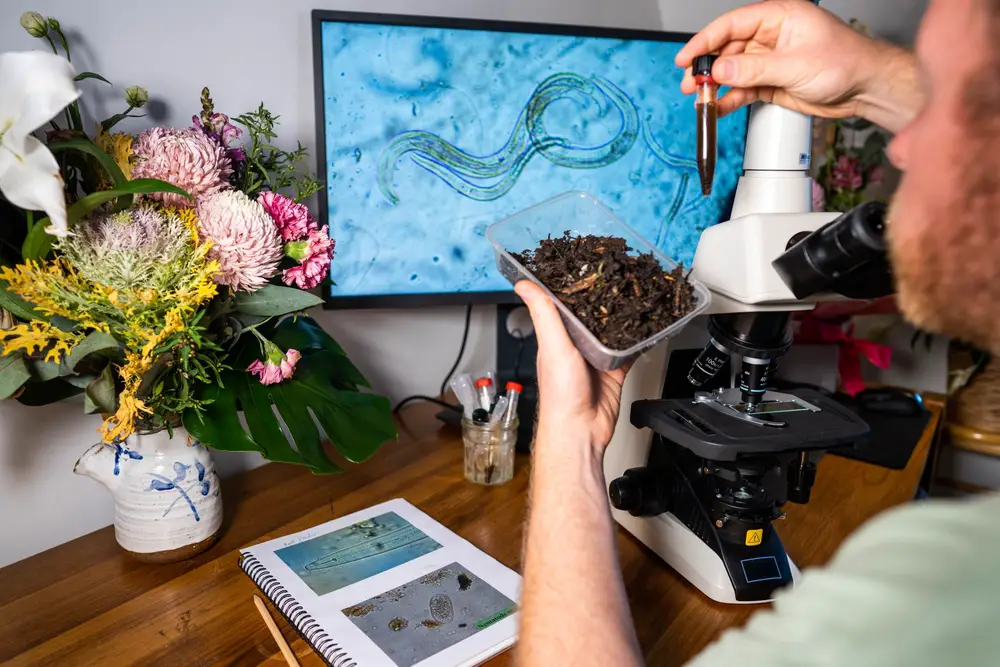You know your pencil cactus is dying if it either looks droopy, brittle, mushy, gray, yellow, or brown. One of the most common reasons for pencil cactus dying is overwatering.
Your pencil cactus may also be drying up because of under-watering, root issues, unsuitable temperatures, humidity, inadequate light, over-fertilization, and unbefitting soil conditions.
The good news is that you can revive your dying pencil cactus by fixing the above problems.
Contrary to what its name suggests, the pencil cactus is a succulent of the Europhobia genus and not a cactus.

Other terms used for this plant include milk bush, naked lady, and firestick plant.
Its origins are traced to parts of Africa and India. You can grow it as a houseplant or ornamental succulent in your garden.
While it is easy to take care of, it also needs to be in suitable conditions.
Read on to learn more about why your pencil cactus is dying and how to save it.
7 Reasons Why Your Pencil Cactus Is Dying
1. Overwatering or Under-Watering
Overwatering is usually the most likely reason for pencil cactus death.
Since the plant is native to dry regions, it is naturally drought-tolerant, thus needs little water to survive.
One sure sign of overwatering is the plant turning yellow. It may also look droopy due to the large amounts of water held within it.
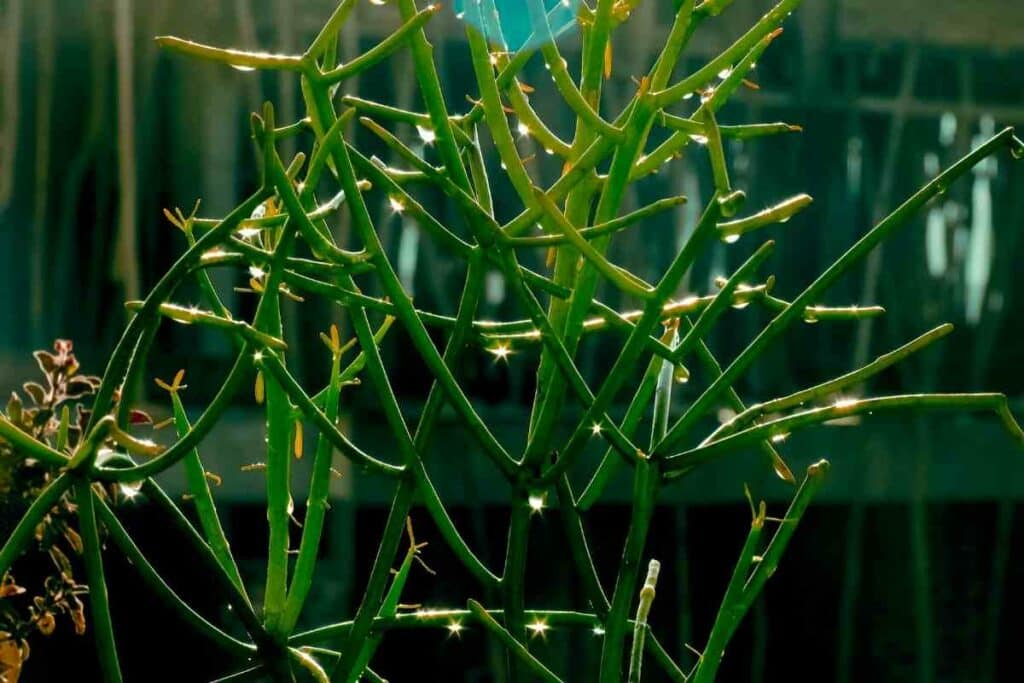
To confirm an overwatering issue, feel the soil. If it feels damp, you watered it a bit too much.
Under-watering may also be an issue if you forget to water the plant.
That Said: The plant’s chances of surviving with less water are certainly higher. You know your pencil cactus needs more water if it turns brown and starts to wrinkle.
2. Root Issues
Your pencil plant could develop root issues due to overwatering or soil compacting.
Excessive watering causes the roots to rot.
The same happens when the soil is too compact and lacks proper drainage.
You will know that the plant is dying from root problems if it appears shaky or mushy.
3. Unsuitable Temperature
As expected, this succulent thrives in warm temperatures, ideally between 50 and 75 degrees Fahrenheit.
This temperature range allows the plant to flower. It can also survive in temperatures higher than that.
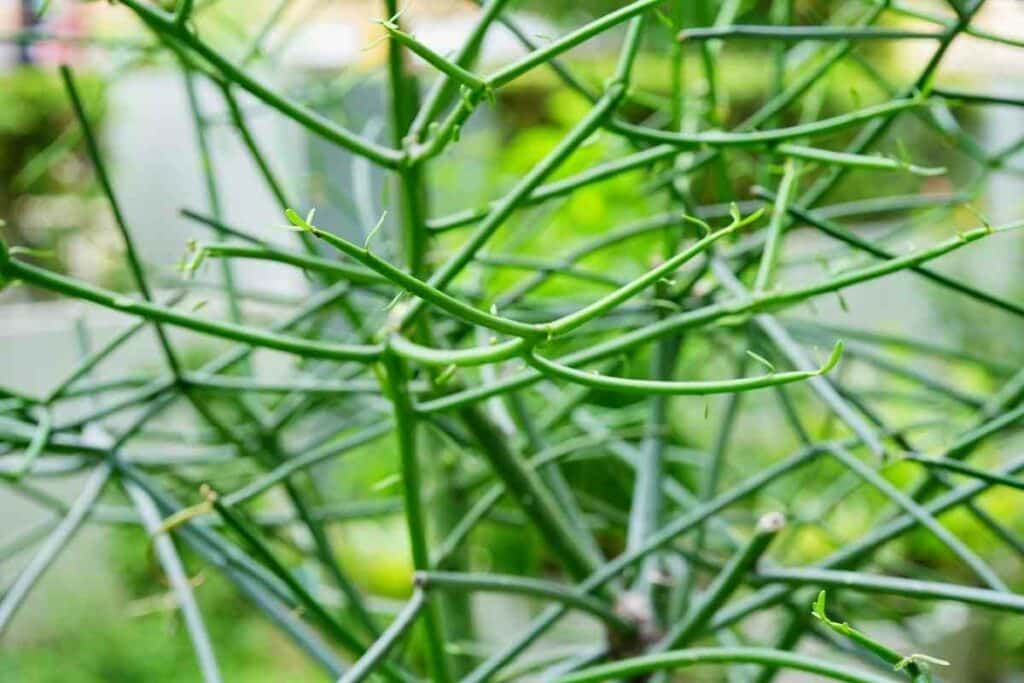
On the other hand, it doesn’t do well below 30 degrees Fahrenheit.
As Such: During winter, the plant may begin to die. The same may happen if the plant is exposed to a cool draft from an air conditioner.
4. Unsuitable Humidity Levels
This drought-tolerant plant also thrives in dry weather conditions.
It can also survive in humid conditions, but only at moderate levels.
High humidity levels may strain the plant and cause it to die off.
5. Insufficient Exposure to Sunlight
The pencil cactus also needs enough sunlight to do well.
A deficiency in light causes the plant to wilt.
6. Too Much Fertilizer
If you apply too much fertilizer to your pencil plant, there may be a build-up of minerals.
This build-up may overwhelm the roots and lead to plant wilt.
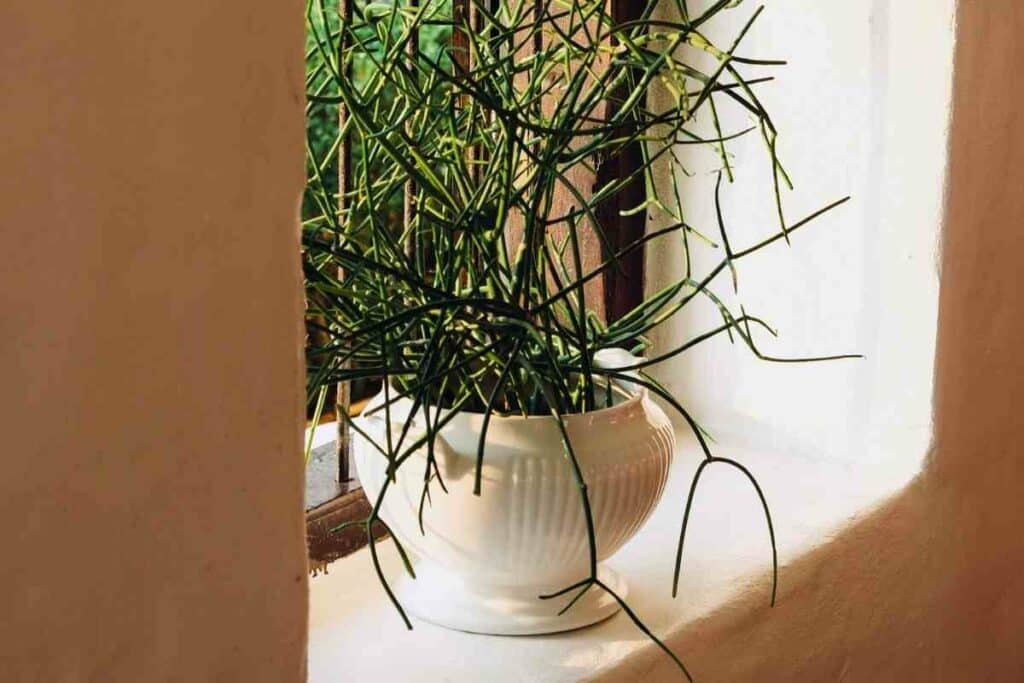
7. Improper Soil Mixing
Your pencil cactus requires adequate soil drainage to do well.
You arrive at its optimum soil conditions by mixing different types of soil that promote proper drainage.
A wrongly mixed soil may store excessive moisture, thus causing the roots to rot.
How to Save Your Dying Pencil Plant
Now that you know why you may be losing your plant, here is how you can revive it.
Proper Watering
You only need to water your pencil plant once every ten days during summer or spring.
In the winter or fall, only water it once a month.
Before watering the plant, always check the soil. You should only water it if it’s dried out. If the soil is still moist, give it a few more days.
If your plant is outdoors and it has been raining, you don’t need to water it.
That said, you should regularly inspect the plant for signs of under-watering and water as needed. Also, use your fingers to check the moisture level in the soil.
If your plant was dying from too much water, allow the soil to dry out completely before watering again.
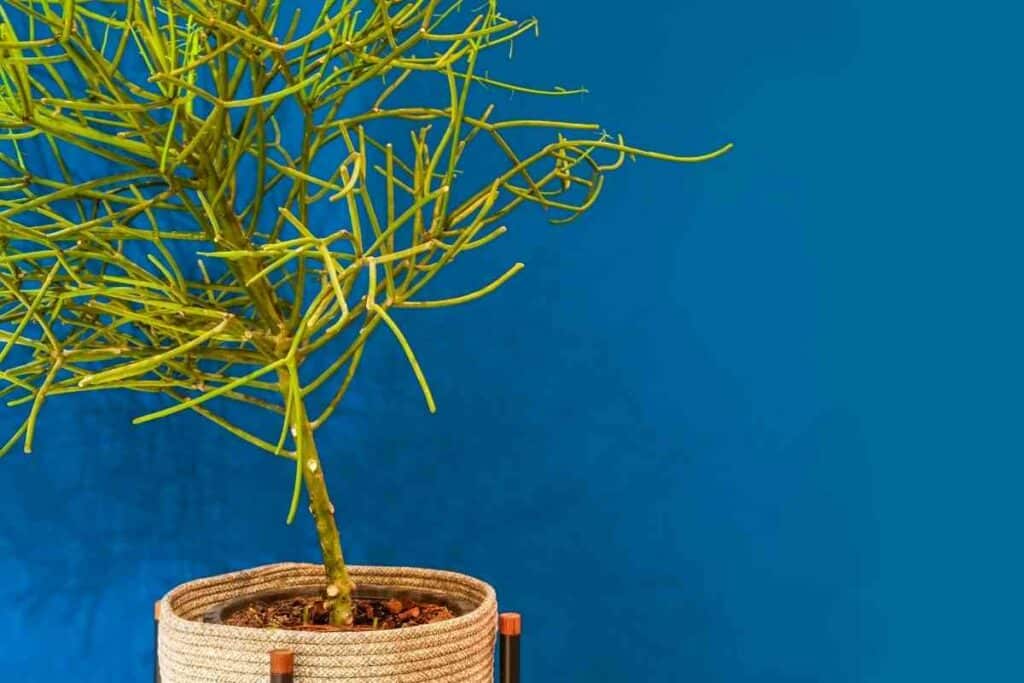
You could also report the plant is a new dry soil.
If the issue was inadequate water and the plant was wrinkly, you can water it weekly until it regains good health.
After That: You can go back to watering after ten days or more.
Repot the Plant
If your plant is suffering from root rot, it is advisable to plant it afresh in new soil.
Ensure that you remove the sections of the roots that are destroyed. The rotten roots may appear black and may have a nasty odor.

While it’s possible to revive the plant after root rot, it is essential to note that it may not recover from extensive damage.
If your plant doesn’t heal, get a new plant altogether.
Your Call: You may also repot your pencil cactus if it seems to have outgrown the current container. A larger pot gives the roots more room to spread and grow as needed.
Protect the Plant During Cold Weather
If your plant is outdoors, you can protect it from the cold by covering it in frost cloths.
Also, if possible, move the plant to a safer spot, away from the cold.
Provide Proper Aeration

If your plant struggles due to high humidity levels, aerate the spot more.
Ensure that the levels remain moderate at all times.
Expose the Plant to More Sunlight
If your plant is indoors, you need to be deliberate about lighting.
The pencil cactus needs to receive direct sunlight; hence you should move it next to a window.
The window placement is also crucial as it needs to be positioned to receive sunlight for most day hours.
Proper Fertilizer Application
You only need to apply fertilizer to your pencil plant once a year, preferably in spring.
Liquid fertilizer is highly recommended as you can dilute to about half its strength, giving you better results.
Ensure that the soil is slightly damp before application.
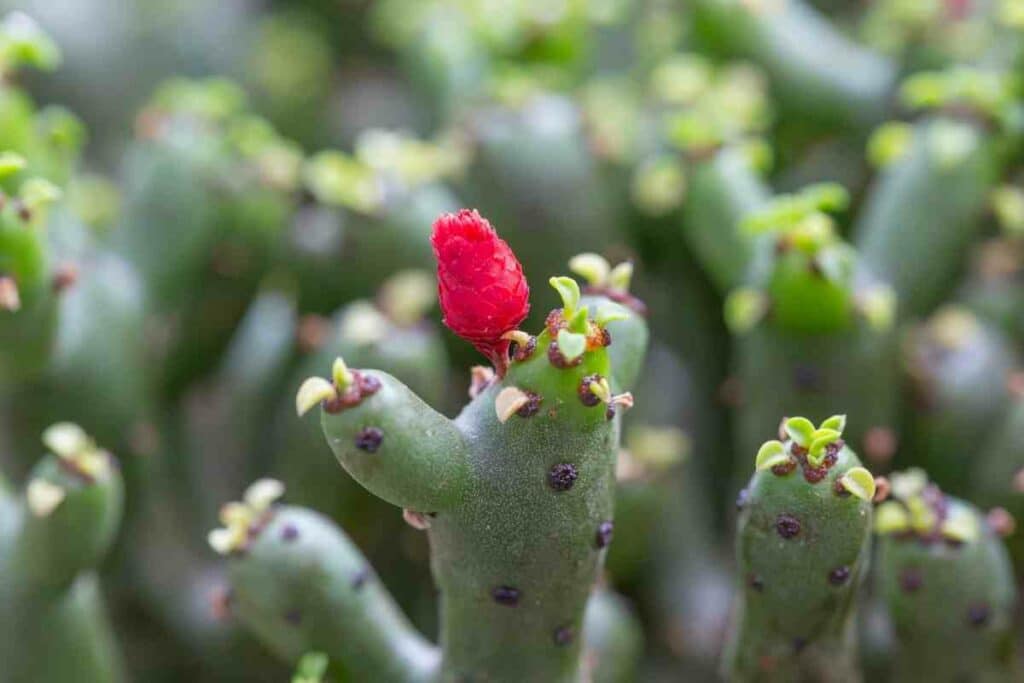
To pick the right fertilizer, you need to consider the nutrient levels in your soil.
You can use nitrogen fertilizers such as 21-0-0 or 33-0-0 if the phosphorus and potassium levels are high.
However, if those levels are low, go for a balanced ratio of 10-10-10 or 20-20-20.
Proper Soil Mixing
Because of the high drainage level needed for the pencil cactus to thrive, it is best to use sandy soil.
The ideal mix contains a quarter part of sand, then gravel or rocks at the bottom for the remaining portion.
This combination provides the plant with adequate drainage and moisture retention.
Apart from having the right soil mixture, it would be best to plant your cactus in a pot with drainage holes.
Control any Fungal Infection
Fungi also affect pencil cactus, and it’s best to control any such occurrence.
A fungal attack presents itself as gray warts on the stems.
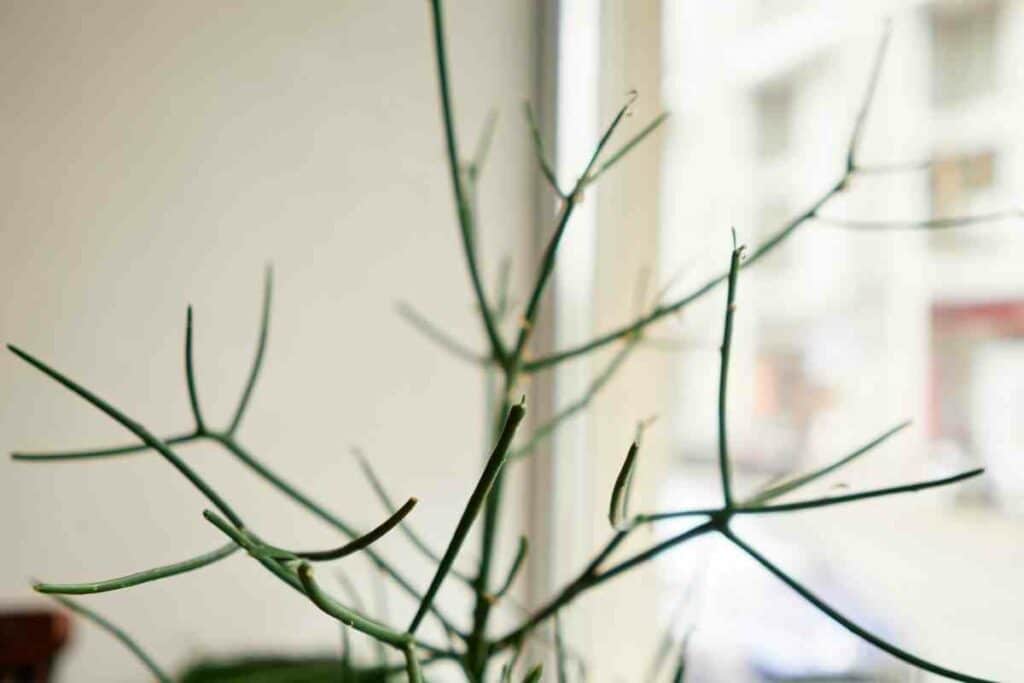
To deal with this, you need to cut off the affected area. This prevents the fungus from spreading.
Use a sterile knife to do so and wear some gloves for protection.
You can also use a sulfur mixture to eliminate any remaining pathogens.
Conclusion
While the pencil cactus plant is a low-maintenance plant, it can die.
Look at the signs the plant is exhibiting to determine the cause.
Then, apply the solutions provided to try to save it. Also, handle the plant with care as the milky sap it produces can cause skin allergies.
If the damage is not extensive, there are high chances of the plant recovering.
But, if the damage is extreme, the plant may completely die, and you need to get a new one. If that’s the case, don’t give up.
Get another one and apply the tips mentioned above.
